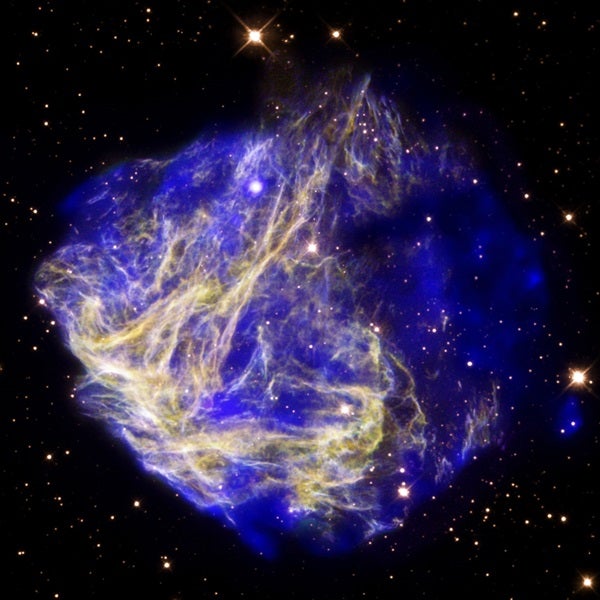The gas density in a supernova remnant is much lower than our outer atmosphere and contains about one particle per cubic centimeter. When the gas is spread over several light-years, its mass can be several times greater than our Sun and contain a large amount of energy. You are absolutely tiny in comparison.
To work the numbers, let’s assume your mass is 150 pounds (70 kilograms), which is roughly 5×1027 particles. Spreading all those particles out to a density of one per cubic centimeter
would correspond to a sphere with a radius comparable to that of Earth!
Tenuous does mean very tenuous. To heat you up to 1.8 million degrees F (1 million degrees C) — the temperature of the supernova remnant — means that you would have to interact with a similar number of hot particles to what you have in your body.
From the above estimate, this means an Earth-radius amount of the tenuous gas. To figure out how far you’d have to fly to hit that many particles, we need to rework the volume from a sphere into a cylinder of the same volume, but with your cross-section area, which I’ll assume is a square meter. The length of the cylinder is then about 600,000 light-years, or six times the diameter of our galaxy. That’s much, much larger than the supernova remnant.
Just flying through the supernova remnant, you would only gain about 50° F (10° C) from the thermal energy of the hot gas. Your own motion colliding with the hot gas would cause far more drastic effects since you would need to be going very fast, even near the speed of light, if you wanted to go anywhere in your lifetime! Moreover, supernova remnants are accelerators of highly energetic particles known as cosmic rays, and they would be my most serious concern.
University of Cambridge, England










